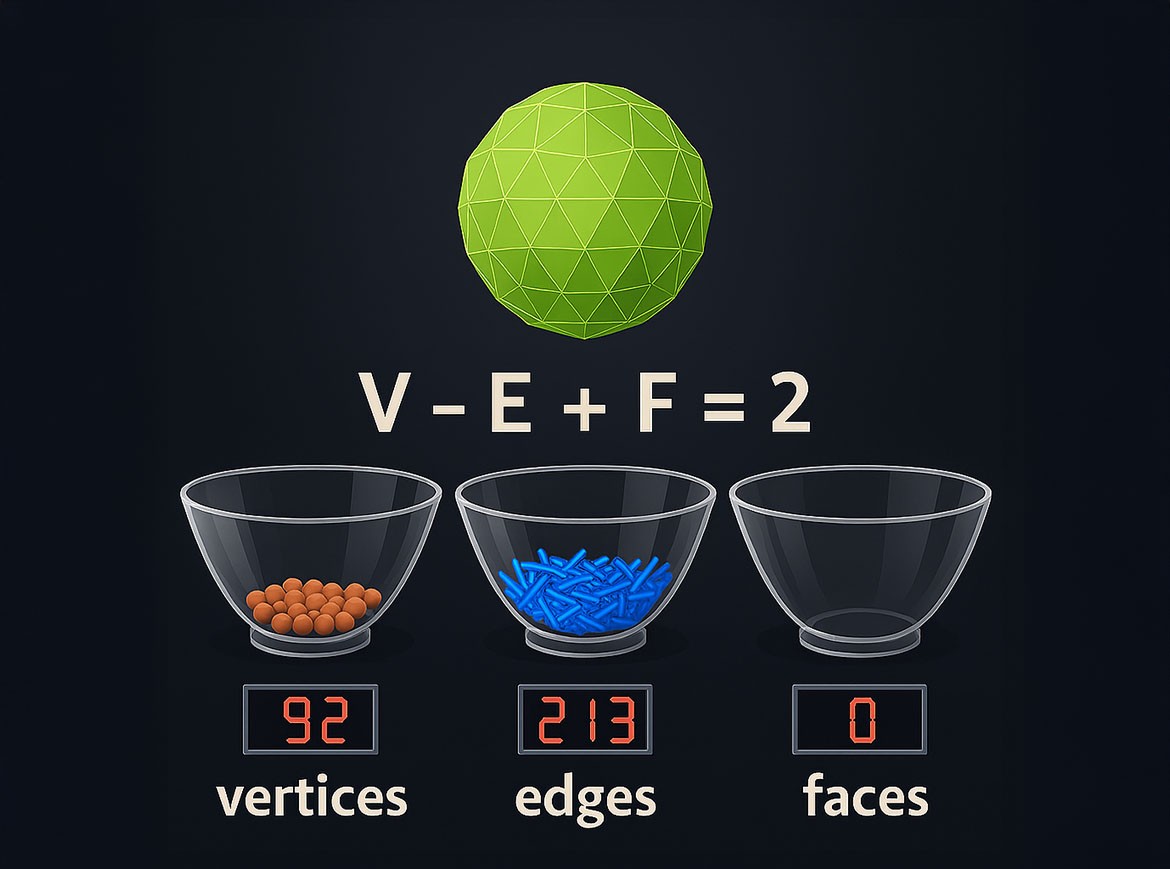The Power of Structure – How Visual Logic Drives XR, AI, and Digital Twins
Visuals by WeirdPhysics (Instagram) – Used for educational commentary
Thinking in Structure, Unlocking Performance – How Visual Logic Accelerates Immersive Systems
What began as a mathematical formula is now a strategic key for high-performance XR applications, AI-generated content, and digital twins. The simple equation V − E + F = 2 describes more than a topological principle – it stands for structure, clarity, and logic.
This logic is not theoretical, it’s practical. Whether a 3D model loads quickly, whether AI understands it, or whether a digital twin functions reliably – it all depends on how clearly it is structured. Visual logic becomes the foundation for real-time performance and automation.
It’s not about the shape – it’s about the order. And that’s where the new power of structure lies.
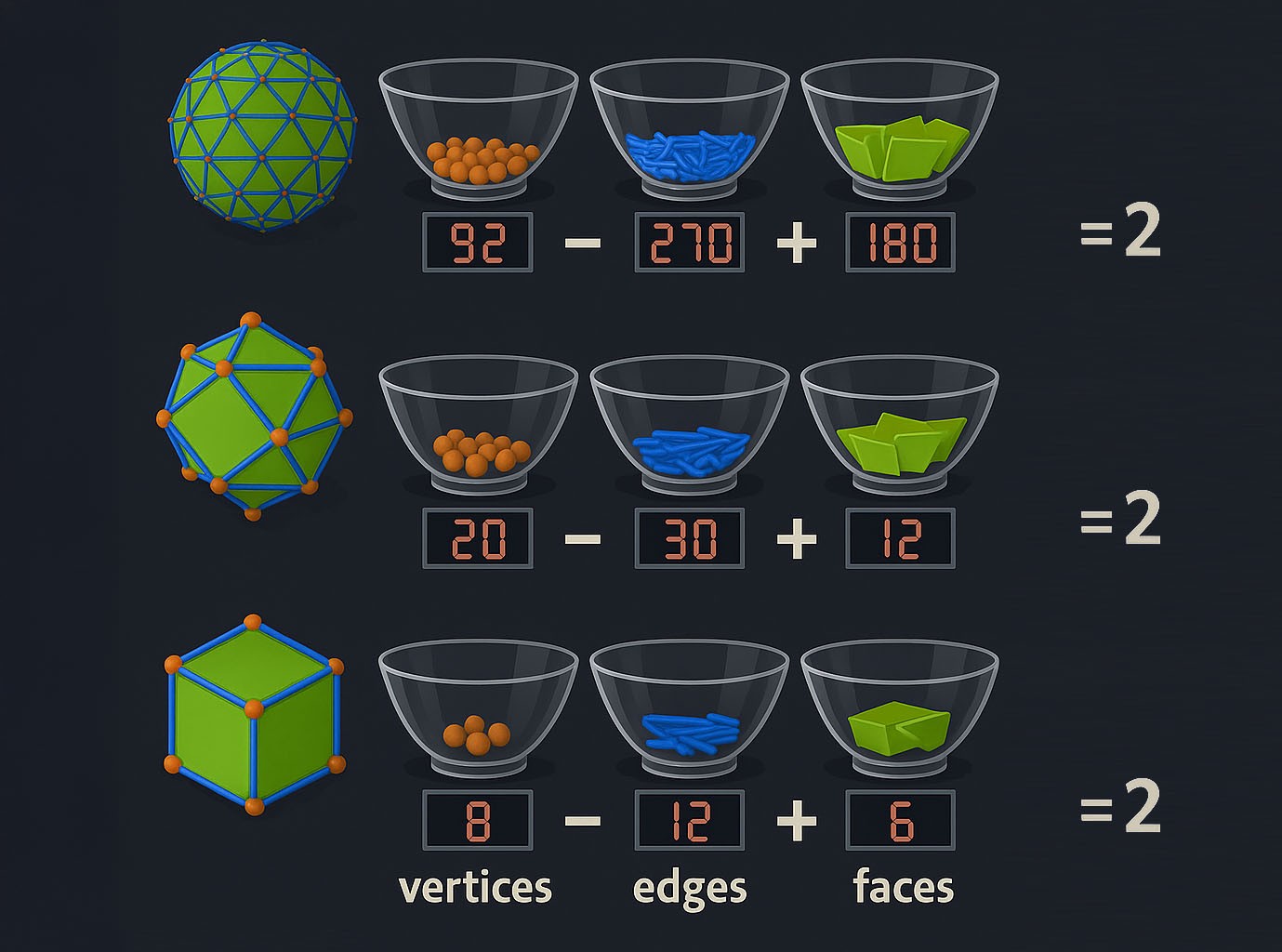
Structured Geometry in Realtime Systems
Visuals by WeirdPhysics (Instagram) – Used for educational commentary
When Order Becomes Visible – From Mesh Logic to Performance
In real-time engines, every millisecond counts. A clean mesh with clear topology not only speeds up rendering – it reduces errors, improves lighting calculations, and makes objects simulation-ready.
Visual logic means thinking of geometry as a system. Clear edge flows, closed surfaces, and stable hierarchies form the basis of real-time capability.
A poorly structured model drains performance. A logically built mesh, on the other hand, is a competitive advantage.
- Polygon Reduction: Less computational load in real time
- Topological Integrity: Clean volumes and surface networks
- Error Prevention: No artifacts from non-manifold geometry
A good model starts with structure. Visual logic turns shapes into systems.
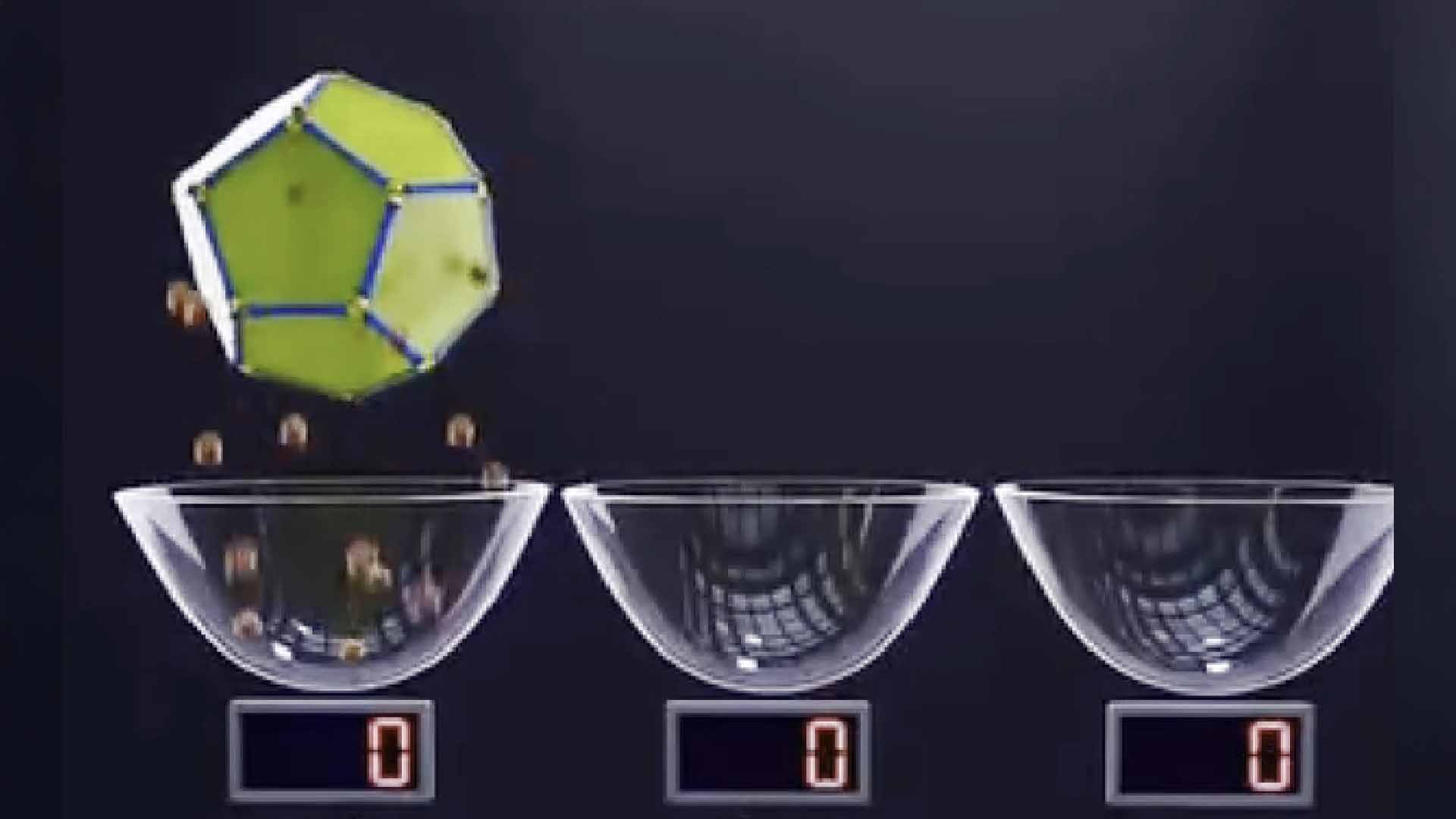
Geometry Optimization for XR Pipelines
Visuals by WeirdPhysics (Instagram) – Used for educational commentary
If AI Is to Understand, It Needs Structure
Artificial intelligence does not recognize art – it recognizes patterns. And these patterns must be legible. In AI-driven 3D workflows, the quality of structure determines the outcome.
Here, visual logic becomes data design: the clearer the geometry, the more efficiently the AI learns. Faulty topology confuses neural networks, while clean structures produce reliable results.
- Training: AI only recognizes consistently structured data
- Generative Processes: Clarity accelerates AI output quality
- Automation: Logically readable geometry enables scripting
Anyone who wants to use AI in 3D must understand geometry as a language – and visual logic as its grammar.
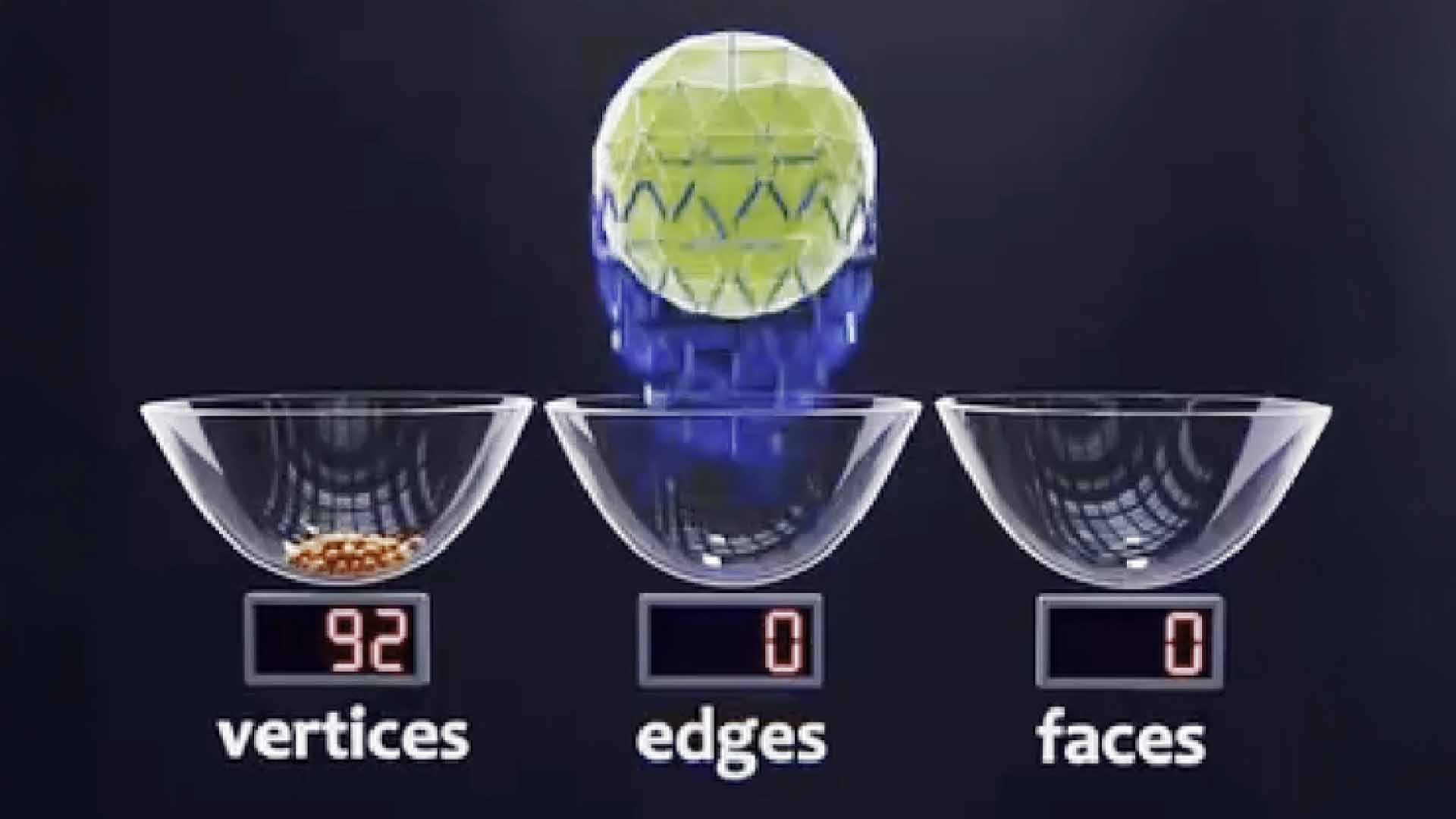
AI Analysis of Structured 3D Data
Visuals by WeirdPhysics (Instagram) – Used for educational commentary
From Object to System – When Visual Logic Transforms Industry
In digital twins, visual logic becomes infrastructure. Only those who structure objects logically can map, control, and analyze processes.
Industrial applications need more than visualization – they need models with meaning. And that meaning comes from clarity in design.
- Segmentation: Components must be identifiable and linkable
- Data Integration: Sensors meet logical structure
- Simulation: Only structured models work in real time
Digital twins only function when what they show is logically structured.
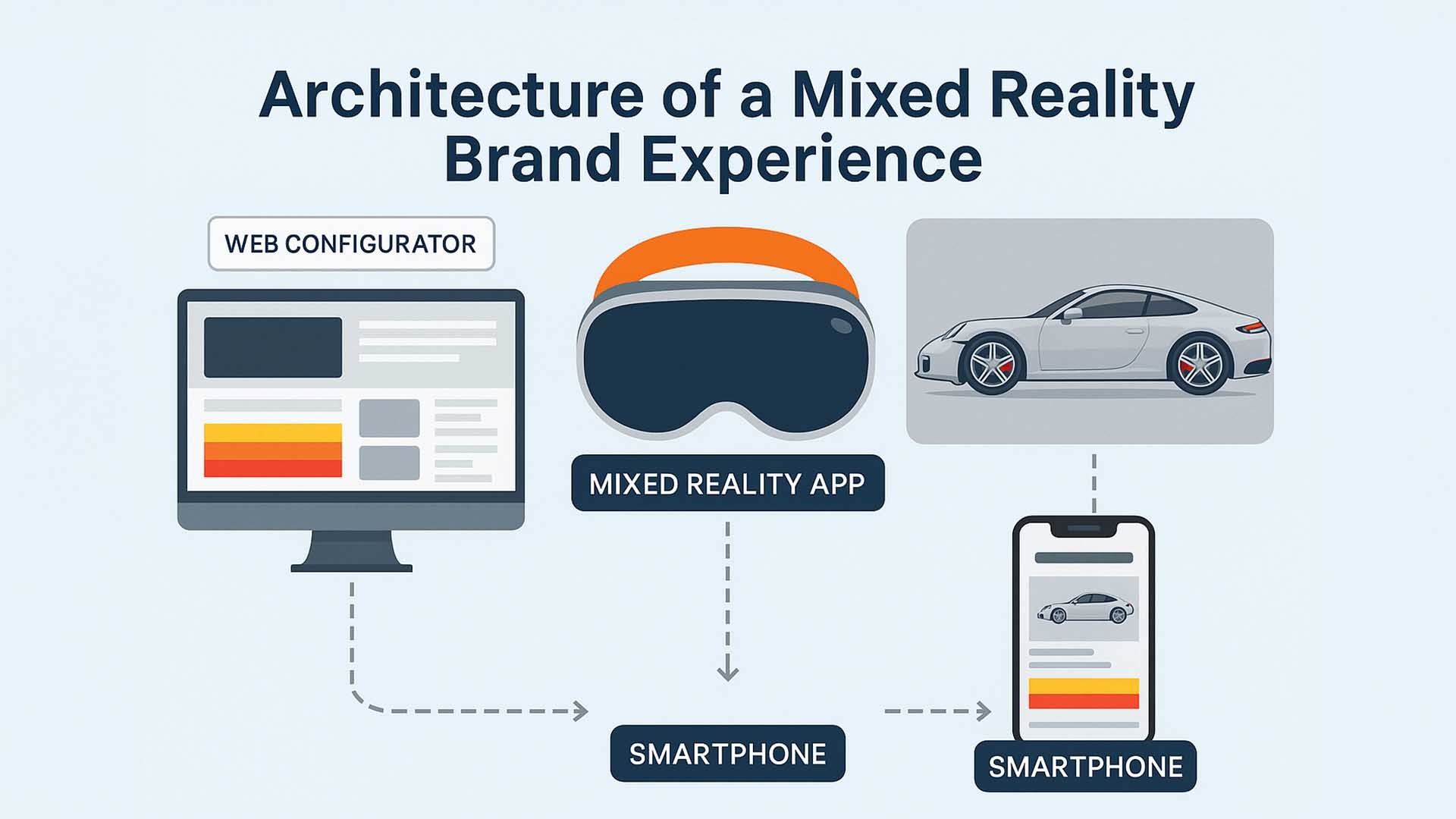
Logical Structures as the Foundation of Industrial Twins
Visuals by WeirdPhysics (Instagram) – Used for educational commentary
Infographic: Structure as the Basis for Digital Twins
The following infographic shows how structurally designed geometry directly impacts real-time capability, data integration, and AI compatibility:
- Structured Models: clearly segmented and topologically stable
- Scalability: modules for flexible simulation architecture
- Data Transparency: visual order facilitates AI integration
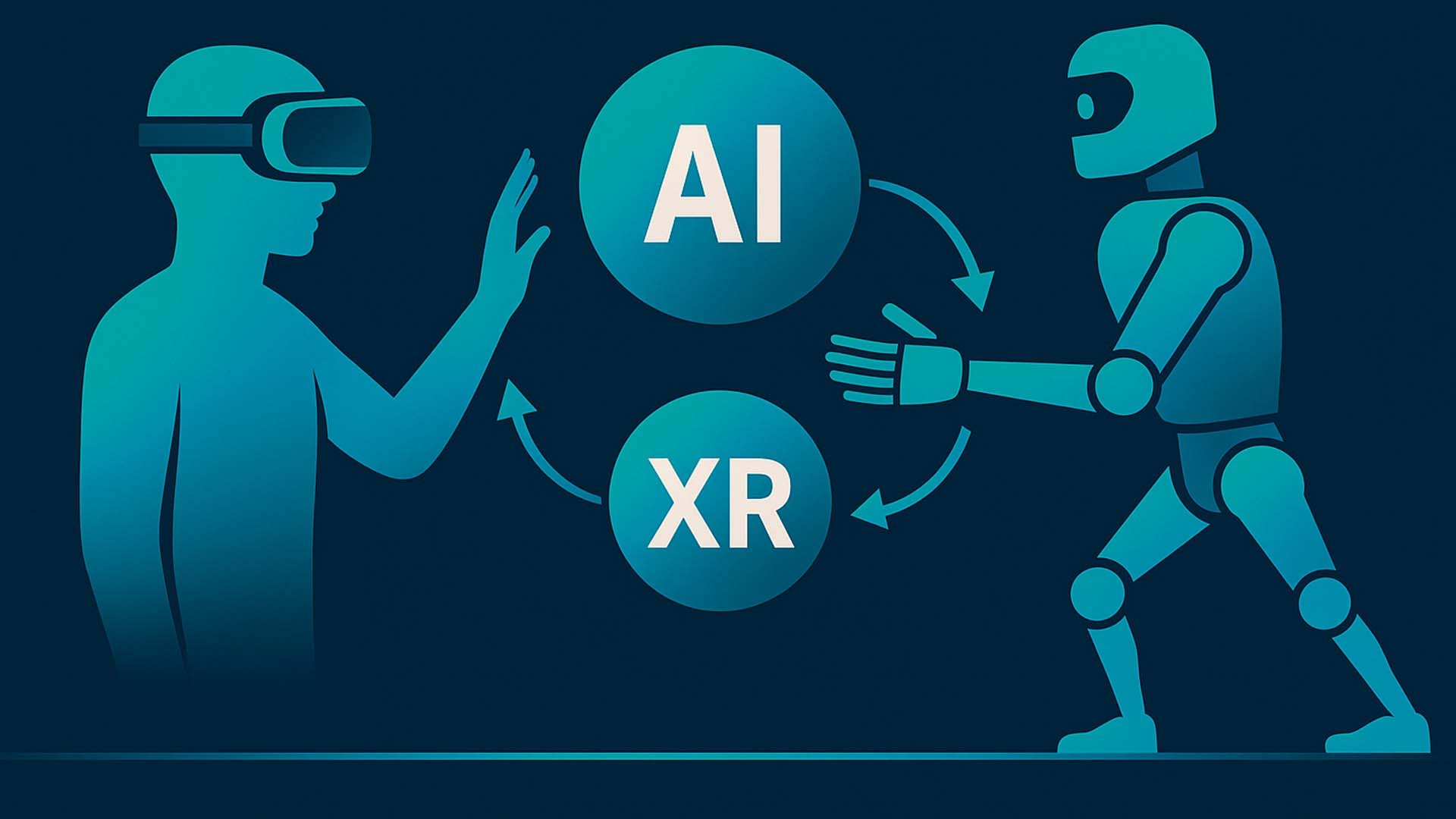
Structure as the Basis for Digital Twins
Visuals by WeirdPhysics (Instagram) – Used for educational commentary
Video: Visual Logic in Action
The accompanying video illustrates how Euler’s formula holds up in dynamic forms. Despite motion and complexity, the topological balance remains stable – a symbol of order in transformation.
The scene shows how abstract structure becomes a system – real-time ready, AI-compatible, and industry-suited.
Visual Logic in Realtime Simulation
Visuals by WeirdPhysics (Instagram) – Used for educational commentary
Contact Our Expert Team
The Visoric Team supports companies in structuring 3D data for immersive real-time systems, XR applications, and AI processes – from consulting to productive integration.
- 3D Structure Analysis: Recognize and optimize visual logic
- XR Engineering: High-performance meshes for real-time systems
- AI Ready Design: Structured data for machine learning
Get in touch now – and let’s shape the order of the future together.
Contact Persons:
Ulrich Buckenlei (Creative Director)
Mobile: +49 152 53532871
Email: ulrich.buckenlei@visoric.com
Nataliya Daniltseva (Project Manager)
Mobile: +49 176 72805705
Email: nataliya.daniltseva@visoric.com
Address:
VISORIC GmbH
Bayerstraße 13
D-80335 Munich


